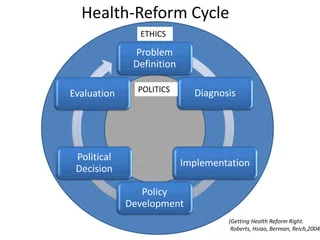Steps to Implement a Hybrid Approach for Health Sector Reform in Bangladesh
1. Conduct a Comprehensive Needs Assessment:
- Start with a detailed needs assessment to pinpoint specific weaknesses and gaps in the health system that have persisted through previous Sector-Wide Approaches (SWAps). Focus on areas like health workforce shortages, financial protection gaps, weaknesses in health information systems, and governance issues.
- Engage a wide range of stakeholders, including community representatives, healthcare professionals, government agencies, and development partners, to ensure diverse perspectives are considered in identifying needs and setting priorities.
2. Develop a Targeted and Focused Sector Program:
- Set Specific Objectives: Define clear, targeted objectives that address the identified weaknesses. For instance, focus on health workforce development, financial protection mechanisms, and enhancing governance and accountability within the health sector.
- Design Flexible and Adaptable Strategies: Ensure that the program’s strategies are flexible, allowing adjustments based on ongoing monitoring and evaluation. This adaptability is crucial for responding to unforeseen challenges such as pandemics or natural disasters.
- Create Clear Monitoring and Evaluation Mechanisms: Develop a robust monitoring and evaluation (M&E) framework with specific indicators, baselines, and targets. Regular reviews and data-driven adjustments are essential to maintaining the program’s effectiveness.
3. Strengthen Core Health System Components Through Revenue Activities:
- Increase Domestic Health Financing: Implement policies to boost domestic health financing, such as improving tax revenue collection, reallocating budgets to prioritize health, and introducing innovative financing mechanisms like health insurance schemes.
- Improve Health Workforce Management: Focus on training, recruitment, and retention strategies for health workers. Consider revising salary structures, providing incentives for service in underserved areas, and creating career advancement opportunities.
- Enhance Health Information Systems: Strengthen the health information management system for accurate and timely data collection and reporting. Invest in digital health technologies and train staff in data management and analysis to support decision-making.
4. Foster Multisectoral Collaboration:
- Integrate Health with Other Sectors: Promote collaboration with sectors like education, water and sanitation, and agriculture to address social determinants of health comprehensively. Form intersectoral committees or task forces to coordinate these efforts effectively.
- Engage Development Partners and NGOs: Collaborate with development partners and NGOs to align their initiatives with the priorities of the focused sector program and core health system components, ensuring that external support complements domestic efforts and addresses critical gaps.
5. Implement Pilot Programs and Scale-Up Successful Models:
- Test Innovations on a Smaller Scale: Use pilot programs to test new models of care, financing mechanisms, or governance structures. Pilots help identify effective approaches that can be scaled up successfully.
- Learn from Successful Initiatives: Scale up initiatives that have proven effective in increasing access to care, reducing out-of-pocket expenditures, or improving health outcomes. Use lessons learned to enhance the broader health system.
6. Ensure Strong Governance and Accountability:
- Strengthen Governance Structures: Enhance transparency and accountability within the health sector by creating independent oversight bodies, improving internal audit functions, and fostering citizen participation in health governance.
- Promote Good Governance Practices: Encourage practices like open budgeting, public disclosure of health spending, and regular performance reviews of health programs to build trust and improve sector performance.
7. Build Community Engagement and Ownership:
- Involve Communities in Planning and Implementation: Actively involve communities in the planning, execution, and monitoring of health programs to ensure interventions are culturally appropriate and address the population’s actual needs.
- Strengthen Health Promotion and Education: Boost health promotion and education initiatives to empower communities, encouraging active participation in maintaining and improving their health.
8. Monitor, Evaluate, and Adapt:
- Conduct Regular Reviews: Regularly review both the sector program and core health system strengthening activities to evaluate progress, identify challenges, and make necessary adjustments.
- Use Data for Decision-Making: Ensure that all decisions are based on data and evidence, allowing for strategic adjustments to enhance program effectiveness and efficiency.
Conclusion: By adopting this hybrid approach, Bangladesh can address critical weaknesses in its health sector while building a more resilient and sustainable health system. Combining a focused, flexible sector program with strengthened core components through revenue activities provides a balanced strategy to achieve immediate health goals and long-term resilience, supporting progress towards Universal Health Coverage (UHC) and Sustainable Development Goals (SDGs).

